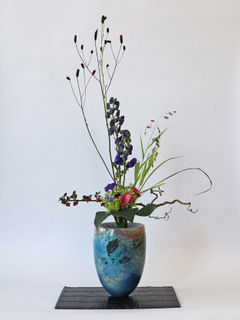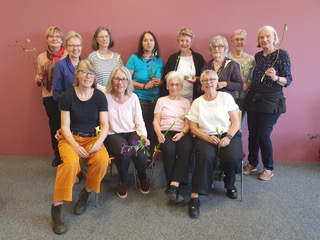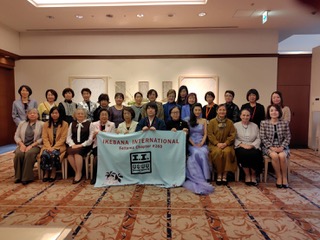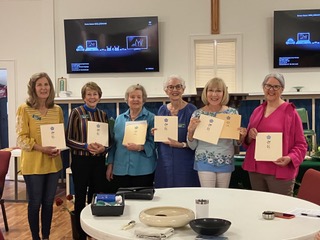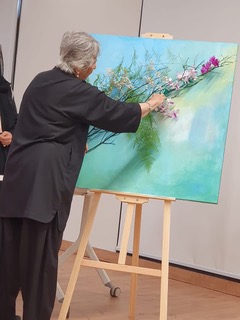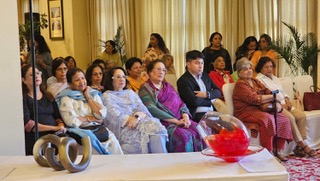Zurich Chapter #214
Els and Beate (our Workshop leaders) and the participants were welcomed by Esther Feucht. Beate introduced the characteristics of Saga Goryu School and explained in detail their main points. Els then explained all about Shôgonka, our first task. The participants enjoyed a demonstration with interesting and helpful explanations and received a very nice documentation to help understand the rules and specifics of the school.
A large and varied selection of materials was available. With expert support each participant found the right material to start the task. For the sky something straight and long is needed, for the wind rather something moving like long grasses, the fire can be a branch with red leaves, water shows waves like, for example, the corkscrew hazel, for the earth again something stable like a thick leaf or a branch is needed and for wisdom something beautiful like flowers are sought.
Then it was time for creating. All stems were placed very close to each other on the Kenzan and even the order had to be followed and a space of 10 cm had to be created above the rim of the vessel. The participants worked with concentration. Some were familiar with pinning stems close to each other, others found it more difficult. The design of the straight foot over the rim of the vessel also showed difficulties. Bending is essential to get the desired angle of the lines in the right place. With great patience Els and Beate helped with the design and in the end everyone could present a beautiful Shôgonka.
The afternoon was dedicated to another speciality of the Saga Goryu School: landscapes. Again, Els demonstrated how to approach the design of a river landscape. Several Kenzan were placed in a large suiban, their positions predetermined. The river was to meander between two rocky banks. The material was cut shorter than usual. The same material was to be placed on both sides of the river. To show life and also death in a forest, a dead branch was also inserted. Small blossoms and leaves complete the forest and stones were used to shape the rocky banks. Some rocks were covered with moss. With enthusiasm river landscapes were created. In Els’ documentation, the participants found the necessary information about Tai, Yu, So, Uso and Saso, which are the main elements of the Saga Goryu Moribana. Thanks to the patient support of Els and Beate, diverse, natural Moribana river landscapes were created.
All the arrangements, Shôgonka and landscapes, were commented and corrected by Els and afterwards photographed by Esther Feucht.
Dear Els, it was a wonderful Ikebana day. Learning and discovering new things under your guidance was great fun. Once again, each participant experienced interesting and helpful things to be implemented in their future Ikebana works.
Thank you Els and Beate for coming to Switzerland and share beautiful hours with our common passion for flowers. That is what “friendship through flowers” is all about.

